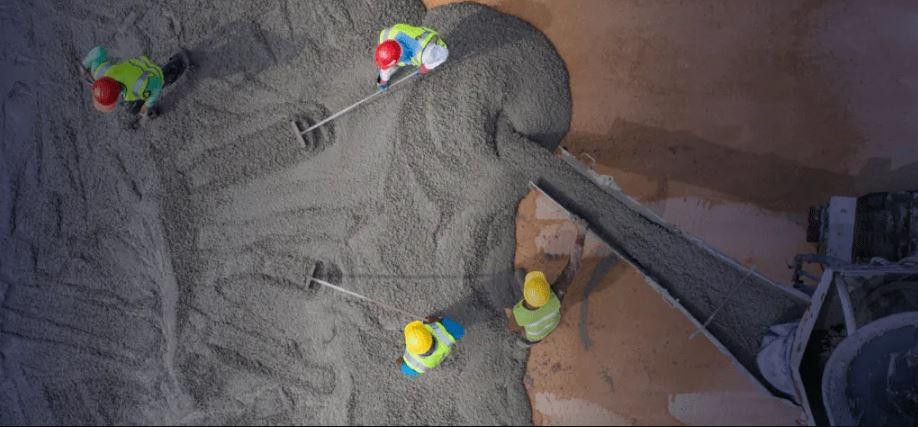Top 3 AI Strategies for Effective Cement Logistics Planning and Stockout Prevention
The cement industry is integral to the construction sector, and efficient logistics planning is crucial to ensure timely delivery and prevent stockouts. In recent years, Artificial Intelligence (AI) has revolutionized various industries, including cement logistics. Implementing AI strategies can significantly enhance logistics efficiency, optimize supply chains, and prevent stockouts. Here, we delve into the top three AI strategies that can transform Cement Logistics Planning.
1. Predictive Analytics for Demand Forecasting
Predictive analytics leverages AI to analyze historical data, market trends, and other relevant factors to forecast future demand accurately. In the cement industry, this can help logistics planners anticipate fluctuations and plan accordingly.
Benefits of Predictive Analytics in Cement Logistics
- Accurate Demand Forecasting: By analyzing patterns in past sales data, predictive analytics can forecast future demand with high precision. This helps in avoiding overproduction and stockouts.
- Optimized Inventory Levels: Accurate demand forecasts enable companies to maintain optimal inventory levels, reducing carrying costs and minimizing the risk of excess stock.
- Enhanced Decision-Making: Predictive analytics provides insights into market trends, helping logistics managers make informed decisions about production schedules and transportation planning.
Implementing Predictive Analytics
To implement predictive analytics, companies should:
- Collect and Analyze Data: Gather historical sales data, market trends, and other relevant information.
- Use AI Algorithms: Employ advanced AI algorithms to analyze the data and predict future demand.
- Integrate with ERP Systems: Integrate predictive analytics tools with existing Enterprise Resource Planning (ERP) systems for seamless operations.
2. Real-Time Tracking and Monitoring Systems
Real-time tracking and monitoring systems, powered by AI, offer significant advantages in managing the Logistics In Cement Industry. These systems provide continuous visibility into the location and status of shipments, ensuring timely deliveries and preventing stockouts.
Advantages of Real-Time Tracking
- Increased Visibility: Real-time tracking systems offer complete visibility of the supply chain, from production to delivery, allowing for proactive management.
- Improved Delivery Times: By monitoring shipments in real-time, companies can optimize routes, avoid delays, and ensure timely deliveries.
- Enhanced Customer Satisfaction: Accurate and timely delivery information enhances customer satisfaction and builds trust with clients.
Implementing Real-Time Tracking Systems
To effectively implement real-time tracking systems, companies should:
- Adopt GPS and IoT Technologies: Utilize GPS and Internet of Things (IoT) technologies to track shipments in real-time.
- Integrate with Logistics Platforms: Integrate tracking systems with existing logistics platforms for comprehensive visibility.
- Analyze Data for Insights: Use AI to analyze tracking data and derive actionable insights for further optimization.
3. AI-Driven Supply Chain Optimization
AI-driven supply chain optimization involves using AI to enhance various aspects of the supply chain, from procurement to delivery. This strategy can significantly improve the efficiency and reliability of cement logistics.
Benefits of AI-Driven Supply Chain Optimization
- Efficient Route Planning: AI algorithms can optimize delivery routes, reducing transportation costs and improving delivery times.
- Enhanced Inventory Management: AI helps in maintaining optimal inventory levels by predicting demand and adjusting stock levels accordingly.
- Improved Supplier Relationships: AI can analyze supplier performance and suggest improvements, leading to better collaboration and reduced lead times.
Steps to Implement AI-Driven Supply Chain Optimization
To implement AI-driven supply chain optimization, companies should:
- Leverage Machine Learning: Use machine learning algorithms to analyze data and optimize various supply chain processes.
- Implement Automated Systems: Automate repetitive tasks such as order processing and inventory management to reduce errors and increase efficiency.
- Continuous Improvement: Regularly analyze supply chain performance data and refine AI algorithms for continuous improvement.
Conclusion
Incorporating AI into cement logistics planning can lead to significant improvements in efficiency, cost savings, and customer satisfaction. Predictive analytics, real-time tracking systems, and Supply Chain Management In Cement Industry are three powerful strategies that can help prevent stockouts and ensure the smooth functioning of the supply chain. By embracing these technologies, companies in the cement industry can stay ahead of the competition and meet the ever-increasing demands of the market.


Comments
Post a Comment